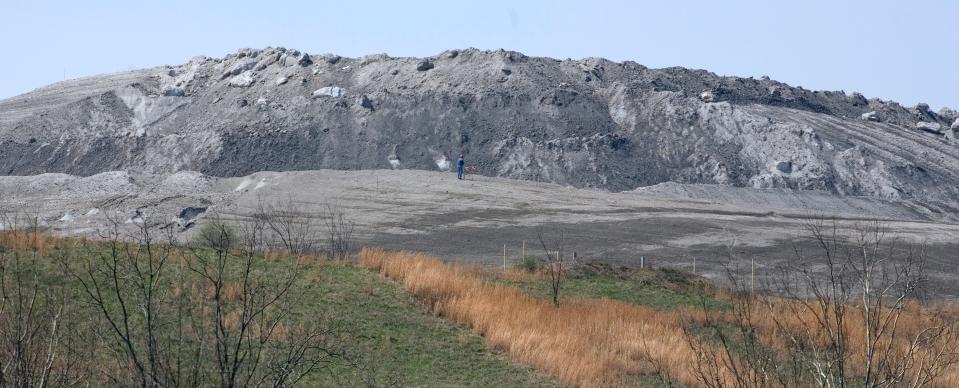Ohio's largest coal plant to change waste storage to comply with EPA order

Facing an ultimatum from the Biden administration, the owner of Ohio’s largest coal-fired power plant said last week that the facility would change the way it disposes of potentially toxic coal ash.
Experts say the new method is friendlier to the environment, but environmentalists say they worry about the coal ash that’s already stored around the James M. Gavin power plant in Cheshire, a village along the Ohio River between Gallipolis and Pomeroy.
A representative of the New Jersey-based Kindle Energy told the nonprofit publication Energy News Network that Gavin plant would use a “dry ash” handling method rather than the “wet ash” method it currently uses.
Wet ash disposal involves dumping wet coal ash — a byproduct of burning coal — into an unlined pond, which poses a risk of leaks into groundwater and nearby waterways, such as the Ohio River.
“If plant owners keep ash dry in the first instance and transfer it safely to a lined, engineered landfill, the owners greatly reduce the risk of water pollution and catastrophic breaches,” Lisa Evans, an attorney specializing in hazardous waste for the environmental nonprofit EarthJustice, said in an email.
The U.S. Environmental Protection Agency decided last month to revoke the plant’s permission to continue dumping the ash into an unlined pond near the facility on the banks of the Ohio River.
As the name suggests, dry ash handling doesn’t involve any liquids. The ash instead is sent to a landfill or stored in silos and has a variety of industrial uses, such as an ingredient in concrete — although it’s unclear what Kindle Energy plans to do with the hazardous waste.
Kindle representatives have not responded to questions from The Dispatch.
“Wet ash handling is slowly being phased out in the industry in favor of dry-ash handling,” said Dr. Tarunjit Singh Butalia, a research associate professor at Ohio State’s Sustainability Institute. He said dry ash is less dangerous to the environment because there is no threat of groundwater contamination, and dry-ash disposal is less expensive.
Environmentalists say they wonder what took the Gavin company so long.
“They've had a significant amount of time where they continued to dump into unlined ponds,” said Neil Waggoner, senior representative for the Sierra Club’s Beyond Coal Campaign. “They get no pats on the back here.”
Moreover, the change does not address the coal ash already dumped near the power plant, he said.
Advocates for the coal industry say no contamination has been found in groundwater near the Gavin plant.
Still, in its decision to force the plant to stop dumping ash into the unlined pond, the EPA called the facility’s groundwater monitoring inadequate.
Environmental groups, such as EarthJustice, conducted their own assessments and found contaminated water, according to both Evans and Waggoner.
Coal ash has been linked to such diseases as chronic obstructive pulmonary disease, or COPD.
pcooley@dispatch.com
@PatrickACooley
This article originally appeared on The Columbus Dispatch: Ohio's largest coal plant to change waste storage to comply with EPA order
